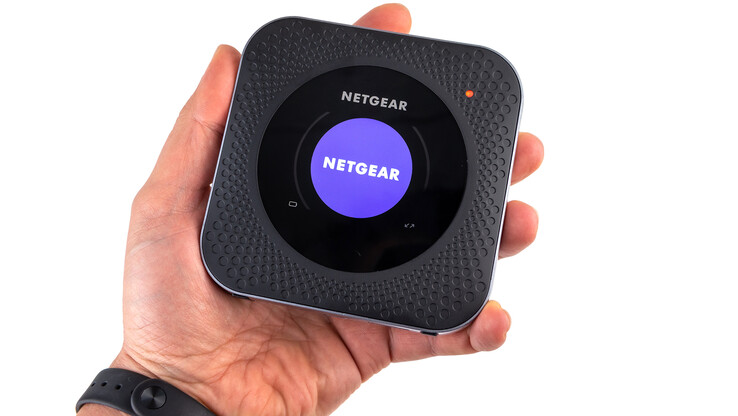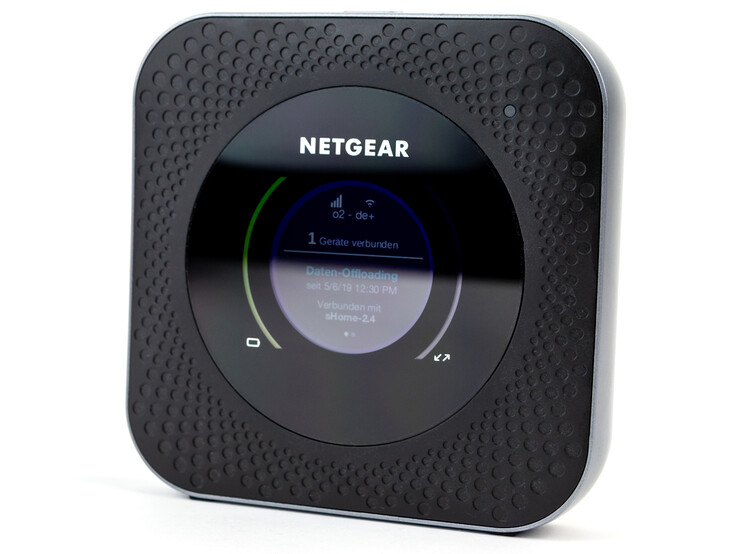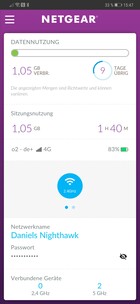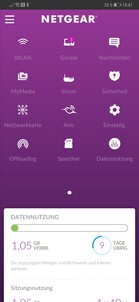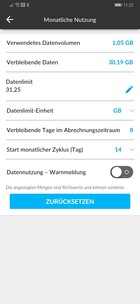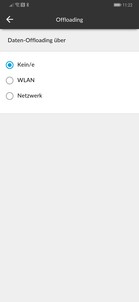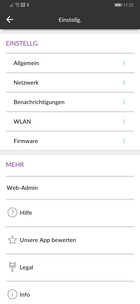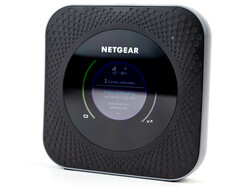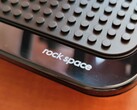NETGEAR Nighthawk M1 Router Review
Being mobile now requires being able to remain always online. However, that can become expensive if you use a lot of data or travel frequently. Mobile hotspot routers often are a more cost-effective alternative to buying several mobile contracts. The NETGEAR Nighthawk M1 (MR1100) is one such router, which claims to support up to 20 devices simultaneously while offering dual-band Wi-Fi from a plethora of LTE Bands.
NETGEAR is best known for its network technology, and the Nighthawk M1 has been on the market for a while now, but we have refrained from testing it because of early teething problems. The company has now ironed these out.
The Nighthawk M1 currently retails for €330 (~$374), but it can be found online for around €290 (~$329). The router is not the cheapest of its kind, but few offer as much as the Nighthawk M1 does.
I/O
NETGEAR has equipped the Nighthawk M1 with USB Type-A and Type-C ports, the latter of which charges the router. Both ports can be used for connecting media servers or NAS drives though. The router also supports microSD cards and can read FAT16, FAT32, NTFS, HFS and HFS+ file systems. Moreover, the Nighthawk M1 can be used as a base station for Arlo surveillance cameras.
The router has a round LCD display too, which you can configure with a corresponding app. The screen displays important information such as the volume of data that has been consumed, the number of connected devices and signal levels. Helpfully, the router can display the password for its Wi-Fi network on its screen too. NETGEAR flanks the display with two status bars that display the battery level of the router and how much data it has used.
The Fast Ethernet mode only operates at up to 100 MBit/s, unfortunately, while PoE is unsupported. NETGEAR hides two TS-9 connectors under two flaps, to which you can connect external antennas. These must be purchased separately though.
The Nighthawk M1 measures 105.5 x 105.5 x 20.35 mm (~4.15 x 4.15 x 0.8 in), which is compact enough to fit in a bag without taking up too much space, although it is too bulky to fit in most pockets. The router also weights 240 g (~8.5 oz), which is rather light. We liked the build quality of our review unit too. The bottom of the router has a grippy finish so it should not slide about on a table. Likewise, the router looks expensive despite being made from plastic.
Setup & Operation
Activating the Nighthawk M1 is relatively simple. Theoretically, you could insert a micro SIM card and switch on the router, but we would recommend configuring the router first. You can do this with the NETGEAR Mobile app, which you can download on Android and iOS.
NETGEAR has laid the app out clearly and has provided numerous network details along with configuration options. The company allows the M1 t to be used as an Arlo base station too or with NAS drives, as we mentioned earlier. Likewise, the app contains settings for Offloading, which we shall cover in the Connectivity section of this review.
Connectivity
NETGEAR has integrated a Qualcomm MDM9x50 chipset within the Nighthawk M1, which supports LTE Cat. 16 along with bands 1, 3, 7, 8, 20, 28, 38, 40 and 41. It also allows the router to connect to 3G networks using bands 1, 2, 5 and 8. The router does not support 2G networks, but 2G is awfully slow.
Theoretically, the Nighthawk M1 can achieve up to 1 GBit/s download and 150 MBit/s upload speeds with LTE Advanced. Our test device also maintained a decent network attenuation of -75 dBm, puts the Nighthawk M1 on par with the Huawei Mate 20 Pro. By contrast, cheaper smartphones such as the Samsung Galaxy J6 or the Xiaomi Redmi Go could only maintain -86 dBm and -82 dBm attenuations respectively.
NETGEAR includes details in the router’s settings that identifies the LTE band being used, among other things. Overall, our review device achieved decent network signal during our tests.
The Nighthawk M1 also supports Wi-Fi 5 and up to the IEEE 802.11 ac standard. The router supports dual-band Wi-Fi and three levels of transmission power. Dual-band mode and medium transmit power, for example, delivers a connection speed of between 130 and 234 MBit/s when we are one floor below the router. Going a further floor down causes the connection speed to drop to 13 MBit/s, which is practically unusable.
Conversely, switching to the long Wi-Fi range mode increases the connection speed to a maximum of 263 MBit/s when one floor away from the router. Better still, the connection only dropped to 58 MBit/s when positioned two stories away from the Nighthawk M1. However, this mode reduces the maximum possible connection speed from 866 MBit/s to 585 MBit/s.
The short-range Wi-Fi mode delivers a decent connection speed when one floor away from the router too. We measured an average connection speed of 364 MBit/s in this scenario on this mode, which is acceptable, although it is 502 MBit/s lower than when we are near our review unit. The range only begins to noticeably drop off once we go further than one floor away from the router.
NETGEAR has also integrated a feature called Offloading, which allows you to connect the Nighthawk M1 to an existing wired or wireless connection to reduce data usage. We found this particularly useful in hotels or when travelling abroad in countries with expensive roaming charges. In short Offloading worked wonderfully during our tests.
However, the complimentary Fast Ethernet functionality delivers comparatively slow transfer speeds. Moreover, it disables dual-band Wi-Fi, leaving only the 2.4 GHz network open.
Power Management
The Nighthawk M1 has a 19.78 Wh lithium-ion battery (3.85 V/5,040 mAh/W-10a). NETGEAR sells replacement batteries for less than €20 (~$23), which is a fair price. You can switch between batteries on the move, which makes the Nighthawk M1 even more versatile.
Battery life depends heavily on how many devices you have connected. The Nighthawk M1 can last for two weeks on standby with no devices connected to it. However, our test router only had around 30% charge left after 16 hours of a tablet and a smartphone being permanently connected to it. We also disabled automatic updates to limit background data usage and improve battery life.
Streaming Netflix in high quality for 100 minutes also resulted in a 10% drop in battery life, which equates to around 16:30 hours. We did not experience any signal dropouts during this test though.
In short, the Nighthawk M1 should typically last a full day between charges if you only have a few devices connected to it. However, connecting close to the router’s limit of 20 devices would rapidly eat through battery life.
The included charger recharges the Nighthawk M1 fully in about 2:30 hours. Incidentally, the USB Type-A port can charge other devices.
Verdict
We are big fans of the NETGEAR Nighthawk M1 (MR1100). It is compact and offers decent battery life. Most importantly, it provides fast and flexible data connection options. The router does not deliver exceptionally high Wi-Fi range, but this should rarely be an issue in daily use as we suspect most people will keep the Nighthawk M1 close to the device to which they have connected. The quality of LTE reception impressed us too.
What sets the mobile router apart from its competitors above all is its degree of flexibility. The Nighthawk M1 can send LTE, wired and wireless connections to numerous devices. It would work with security servers too.
The NETGEAR Nighthawk M1 has impressed us with its degree of flexibility and fast LTE. It has decent battery life too, but it may not be enough for all potential scenarios.
Unfortunately, the battery life of our review unit did not completely convince us in our tests. The Nighthawk M1 will last a full day with a couple of devices connected to it, but battery life drops heavily when several people use the router simultaneously. Hence, we would recommend taking a charger or a power bank with you if you regularly need multiple devices connected at once.


 Deutsch
Deutsch English
English Español
Español Français
Français Italiano
Italiano Nederlands
Nederlands Polski
Polski Português
Português Русский
Русский Türkçe
Türkçe Svenska
Svenska Chinese
Chinese Magyar
Magyar